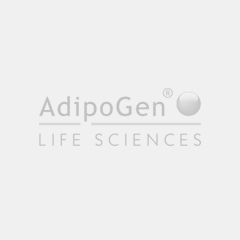Cookie Policy: This site uses cookies to improve your experience. You can find out more about our use of cookies in our Privacy Policy. By continuing to browse this site you agree to our use of cookies.
Bertin Bioreagent
CXCL9 (pig) ELISA Kit

| Product Details | |
|---|---|
| Synonyms | Humig; MIG; C-X-C Motif Chemokine Ligand 9 |
| Product Type | Kit |
| Properties | |
| Application Set | Quantitative ELISA |
| Specificity | refer to technical booklet |
| Sensitivity | ≤ 0,02 ng/mL |
| Range | 0,02-2,00 ng/mL |
| Sample Type | Determined by Customer |
| Assay Type | Sandwich |
| Other Product Data |
Click here for Original Manufacturer Product Datasheet |
| Declaration | Manufactured by Bertin Bioreagent |
| Shipping and Handling | |
| Shipping | BLUE ICE |
| Long Term Storage | +4°C |
| Use/Stability | 6 months after the day of manufacturing. See expiry date on ELISA Kit box. |
| Documents | |
| Manual |
 Download PDF Download PDF |
| Product Specification Sheet | |
| Datasheet |
 Download PDF Download PDF |
CXCL9 is a small cytokine belonging to the CXC chemokine family that is also known as Monokine induced by gamma interferon (MIG). It is secreted by various cell types including immune cells (T lymphocytes, NK cells, macrophages) and non-immune cells (fibroblasts, keratinocytes, endothelial cells). The main factor of production is the interferon-γ in Th1-type immune responses. CXCR3 has been identified as the receptor of CXCL9. The main function of CXCL9 is the recruitment of immune cells on the inflammation site. Enzyme ImmunoAssay (EIA) is a technique to detect and quantify antigens (proteins, hormones) or antibodies in samples. It relies on the ability of an antibody to bind a specific antigen. Either the antibody or the antigen is labelled with an enzyme whose substrate is a chromogen or a fluorogen converted in a measurable product (color or fluorescence). Enzyme-linked Immunosorbent Assay (ELISA) is a type of EIA using a solid phase (ex: microtiter plate) coated with an antigen immobilizing the molecule to detect. Over the time, scientists have extended the term ELISA to EIAs using an antibody coating the solid phase. That explains why our EIA kits using coated antibodies are also called ELISA kits.





